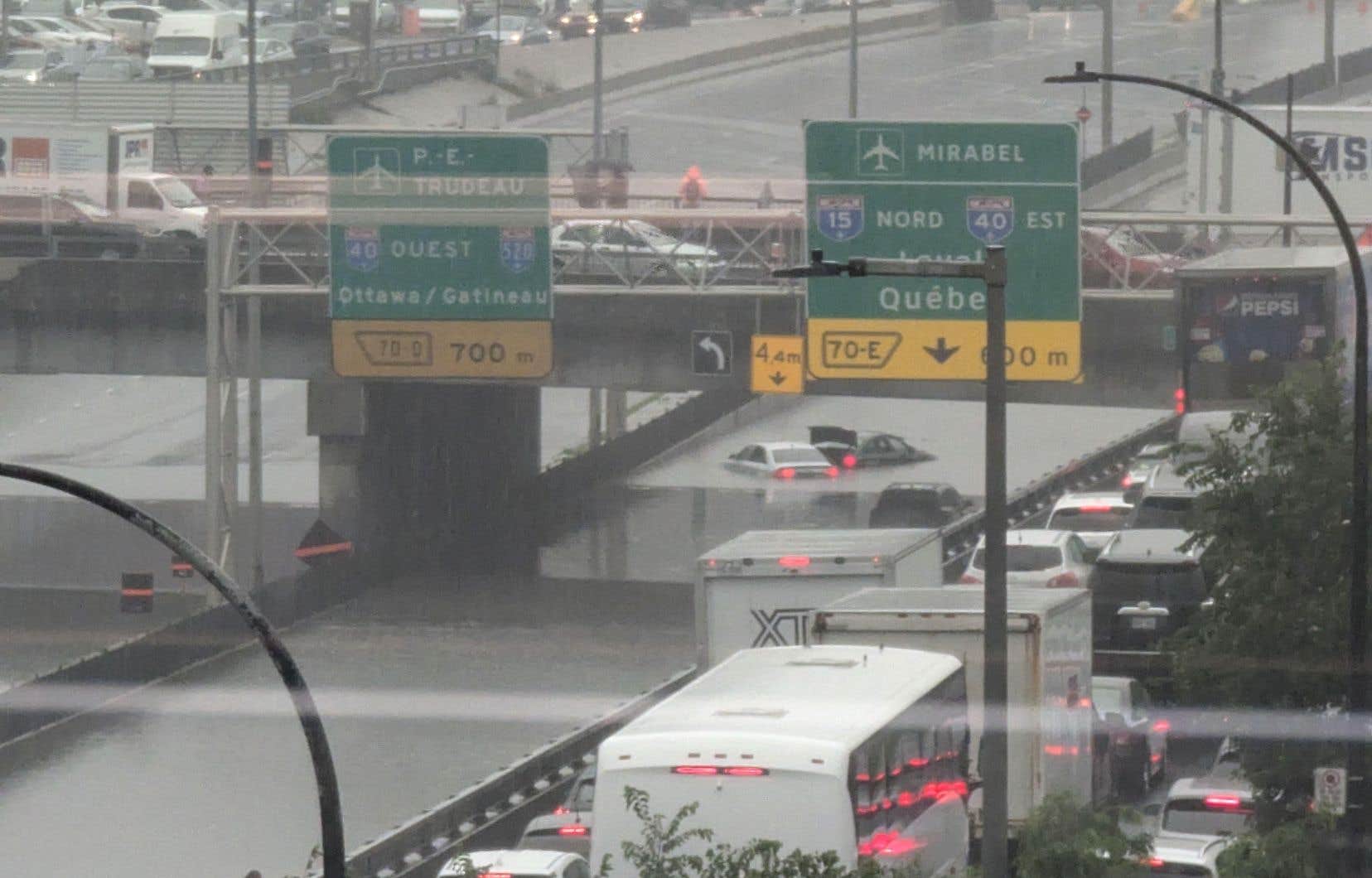Earlier this week, the remains of the hurricane Beryl have paralyzed traffic in the metropolis by completely flooding many sections of highways. A situation that demonstrates the need to adapt infrastructure to climate change, according to the City of Montreal.
Images shared on social media showed cars stuck with water up to their windows on the section of Highway 15 between Côte-Saint-Luc and Highway 40. Drivers trapped had to be rescued by police. The same ordeal occurred on certain sections of Highways 13 and Bonaventure, which were closed to traffic while the water cleared.
Montreal’s sewer system was not designed to handle amounts of rain like the 100 millimetres that fell on Wednesday, says Philippe Sabourin, spokesperson for the City of Montreal.
The event, although described as “exceptional”, is not its first occurrence. On July 14, 1987, a storm paralyzed the city and hundreds of motorists had to be evacuated from a completely flooded Décarie Expressway. The same thing happened on July 5, 2005, when heavy rain forced the closure of the Acadie interchange and the Décarie Expressway for a few hours. The same thing happened on July 13 of last year.
The repeated floods that have damaged Montreal’s road network have been the source of numerous legal actions. For the floods of the summer of 2005 alone, the City of Montreal was sued for more than $8.5 million.
“It’s the topography of the area that causes water to flow, by gravity, over this infrastructure,” explains Isabelle Thomas, professor at the School of Urban Planning and Landscape Architecture at the University of Montreal, who is not surprised that the Décarie Expressway is often flooded during heavy rain events.
“We can’t change all our pipes at the same time”
To explain why such floods occur even though the problem is known, the City of Montreal points to the poor adaptation and obsolescence of some of its underground infrastructures.
“When we built Montreal’s sewer system in the 1960s, we didn’t have torrential rains like we see today. Rainfall of this magnitude normally happens once a century,” explains Philippe Sabourin, spokesperson for the City of Montreal. Major work will be needed to solve the problem, he says, and “we can’t change all our pipes at once.”
The City also invites citizens to do their part to limit the impacts of heavy rain events. “During heavy rains, anything lying around on public property will be drained by the water and will obstruct [les bouches d’égouts et saillies de trottoir]so it is very important not to leave waste lying around on public property,” explains Mr. Sabourin. He also calls on citizens to direct the gutters of their homes towards plant surfaces, which can absorb water, rather than towards the roadway.
Montreal has been working for several years to adapt its infrastructure to new climate conditions and the more frequent extreme weather events they cause. “We are building underground retention basins and working to oversize our pipes,” adds Mr. Sabourin. “This is complex work, because we also have to take into account other underground networks, such as gas lines, electrical wires and telephone cables.”
The metropolis plans to spend $390 million over the next 10 years to upgrade its underground infrastructure.
Drainage curbs and sponge parks – green spaces built at a lower height than the surrounding streets – are also part of the measures implemented by the city. “Rather than going to the residents, the water will go to these areas,” explains Professor Thomas. Vegetated curbs, for their part, allow water to infiltrate into areas along the streets, retaining this water in the ground rather than letting it spill onto the roadway.
“The City of Montreal is quite proactive on this issue,” notes Isabelle Thomas. The city currently has seven sponge parks and 800 green sidewalk overhangs. It plans to build 30 additional parks and 400 sidewalk overhangs by the end of 2025, at a total cost of $140 million. For its part, the Quebec government intends to devote $1.8 billion by 2029 to adapting to climate change.
